#memorial and museum of the slovak national uprising
Photo
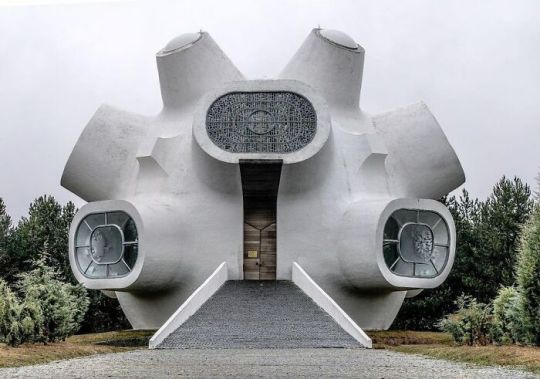
Ilinden / Makedonium – A Monument Dedicated To The Fighters And Revolutionaries Who Participated In The Ilinden Uprising Of 1903
Revitalizing The Heritage Of Socialist Modernism: BACU’s Online Initiative To Protect Central And Eastern European Architecture
Preserving the monumental yet decaying structures of central and eastern Europe erected between 1955-91 is the mission of the online initiative, Socialist Modernism, created by the Bureau for Art and Urban Research (BACU). With an aim to revitalize this heritage, BACU believes in the significance of these elements which managed to defy some of the ideological requirements of their time, giving the urban space a distinct flavor characteristic of the socialist period.
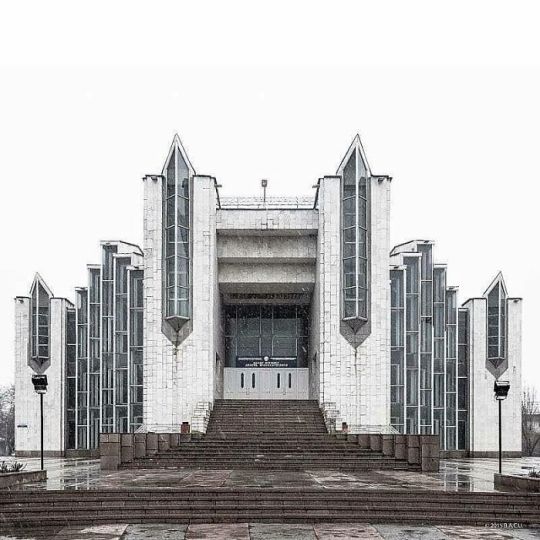
Palace Of Weddings, Bishkek, Kyrgyzstan, Built In 1987
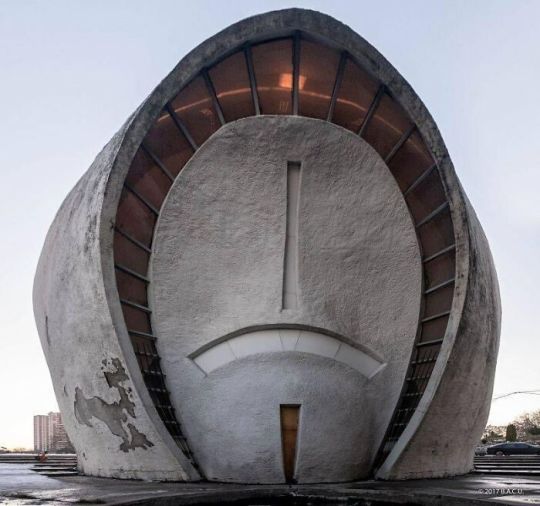
One Of The Two Halls Of Parting, Memory Park (Kyiv/Kiev) Ukraine. Built 1968–1981
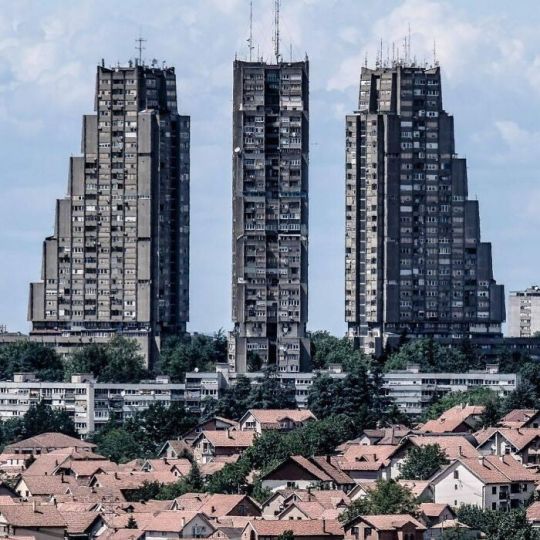
Eastern Gate Of Belgrade, Rudo Buildings, (Istočne Kapije) Belgrade, Serbia, Built In 1976, Architect: Vera Ćirković Engineer: Milutin Jerotijević
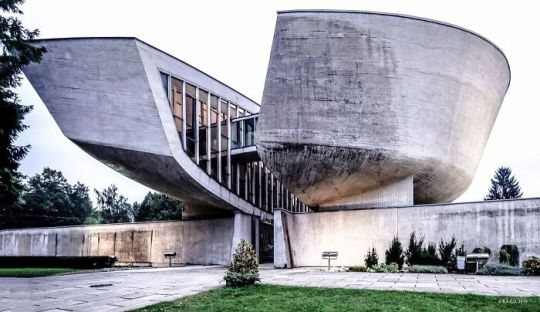
Museum Of The Slovak National Uprising, Banska Bystrica, Slovakia, Built In 1969
#socialist modernism#bureau for art and urban research (bacu)#central and eastern european architecture#architecture#history#socialism#heritage#ilinden uprising#palace of weddings#bishket#kyrgyzstan#halls of parting#memory park#kyiv#kiev#ukraine#belgrade#servia#museum of the slovak national uprising#banska bystrica#slovakia
5 notes
·
View notes
Text
The Slovak National Uprising (SNP) is one of the most significant moments in the history of Slovakia, when the Slovak people stood up against the authoritarian regime and the German occupation. This armed resistance, which broke out on August 29, 1944, is a symbol of courage and national pride. However, as ethnographer and historian Zuzana Kumanová points out, the important role that the Roma played in the uprising is often forgotten. “The Roma, just as they were part of Slovak society, were also part of the resistance movement,” says Kumanová. According to her, some Roma joined the army directly, while others joined the partisans, where they fought with weapons in hand. “Many communities became involved in the effort, whether by providing shelter, helping with supplies, or assisting injured and sick partisans,” she adds. This assistance undoubtedly had enormous significance for the course of the uprising, but it also brought cruel consequences for the Roma communities themselves.
Kumanová further explains that it was during this period that Roma communities were being massacred, often unjustly accused of aiding the insurgents. “There were massacres of Roma communities, especially those accused of providing help, whether real or imagined,” she emphasizes.
LOSSES AND VICTIMS
The exact number of Roma who actively participated in the uprising is unknown, as records were not kept based on ethnicity. However, Kumanová estimates that “in central Slovakia, almost every settlement saw young people, especially young men, leave for the mountains to assist the insurgent army.” The estimated number of Roma victims after the suppression of the uprising is tragic. “These victims are estimated to be around 1,000 people,” states Kumanová, referring mainly to victims from large communities such as Ilia and Čierny Balog, as well as individual executions, where “they were either transported to mass execution sites in the German-controlled Kremnička or Dolný Turček,” Kumanová said in an interview with Gipsy Television.
A FORGOTTEN CHAPTER OF HISTORY
According to Kumanová, the participation of Roma in the Slovak National Uprising is still “to some extent taboo.” Although Roma were an integral part of all significant events in Slovak history, society often does not give them the recognition they deserve. “Society doesn’t realize that Roma are part of all processes, just as it doesn’t realize that Roma were part of 1989 or 1968,” she points out. Even the significance of their participation in the uprising went unrecognized for a long time. Kumanová recalls that “a memorial plaque dedicated to the partisan movement or to Roma partisans was only unveiled at the Museum of the Slovak National Uprising in 2016,” thanks to the initiative of the museum’s then-director, Stanislav Mičev. This insufficient recognition and awareness of the contribution of the Roma in the Slovak National Uprising is, according to the ethnographer and historian, alarming. Kumanová believes that if this topic is not discussed, the Roma will continue to be perceived only as a marginalized community. “This is something we need to build upon, otherwise the Roma will remain only those in excluded communities,” she adds.
1 note
·
View note
Photo
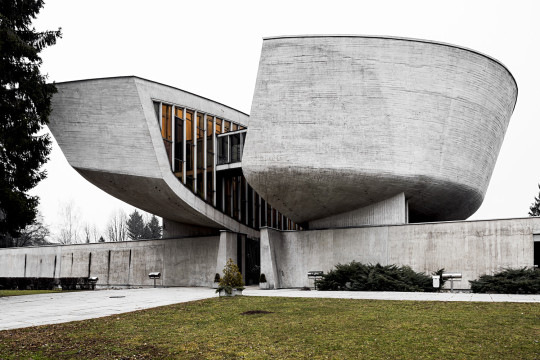
Memorial and Museum of the Slovak National Uprising, Slovakia
106 notes
·
View notes
Text
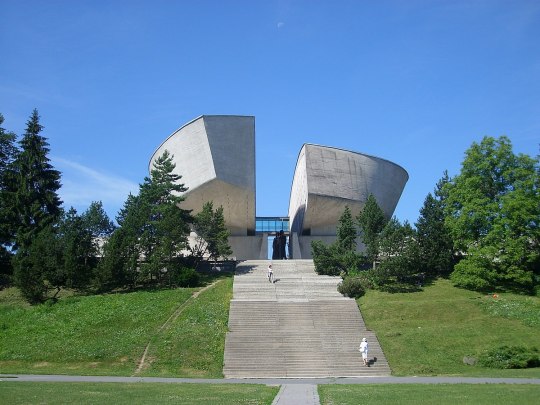
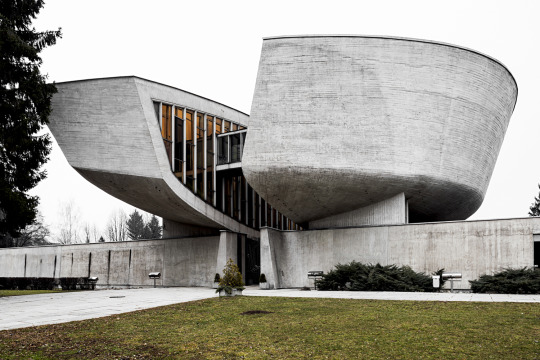

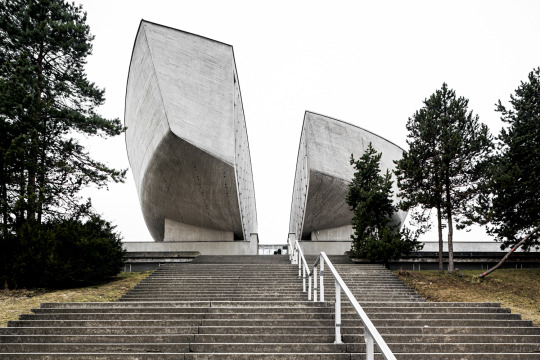
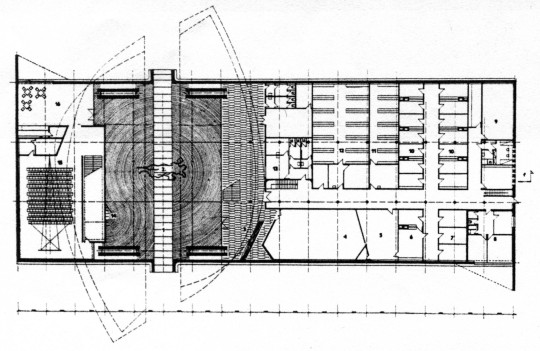
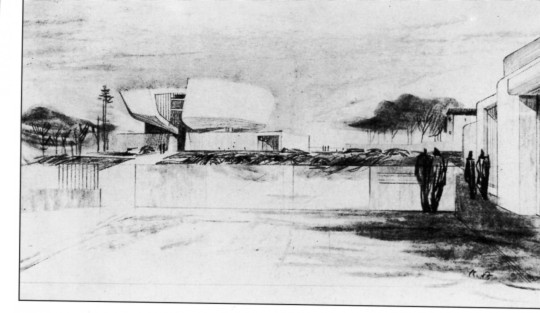
Dusan Kuzma, Memorial and Museum of the Slovak National Uprising, Banská Bystrica, Slovakia, 1963.1970
https://www.register-architektury.sk/en/objekt/272-monument-to-the-slovak-national-uprising
36 notes
·
View notes
Photo

Memorial and Museum of the Slovak National Uprising, by architect Dušan Kuzma, 1963-1970
153 notes
·
View notes
Text
25 Sights of Bratislava
New Post has been published on https://tripsterguru.com/25-sights-of-bratislava/
25 Sights of Bratislava
The city received such a friendly name not so long ago: until 1919 it was Presporek. Now Bratislava is the multinational capital of Slovakia, the only one of all European capitals directly bordering Hungary and Austria. The border connection with Austrian territory is so close that ul. Kopchyanskaya Bratislava smoothly passes into the street of the neighboring Austrian village. Bratislava retained the status of the capital of the new independent state of Slovakia, which separated from the united Czechoslovakia after the collapse of the socialist camp (1993). Now the city is actively developing its infrastructure and industry, preserving historical attractions. Let’s talk about the most interesting sights of Bratislava.
Bratislava Castle
The most famous attraction of the city – Bratislava Castle is visible from all points of the city, because it is located on a high cliff above the majestic Danube. The snow-white monumental building under the red roof, like a huge swan, literally hovers against a heavenly background. This architectural masterpiece at night in the shining lights of illumination is irresistibly beautiful. The castle building has a difficult long history of its existence.
As early as the 3rd millennium BC. e. the first buildings have already appeared on the site of the present castle (proved by archaeological excavations). For the first time about the castle can be found in the documents of the year 907, in which it was listed as the site of the coronation of Hungarian kings.
In the 15th century, the majestic palace was surrounded by defensive fortifications and gates, but at the beginning of the 19th century, as a result of a strong fire, a significant part of Bratislava Castle burned down. Only after 140 years, the authorities, under pressure from the public, drew attention to the historical building, and the active restoration of the architectural monument began (1953-1968). The castle rose from oblivion, acquiring the appearance of late Gothic architecture of the 15th century. The magnificent structure of a regular 4-angled shape with angular pointed towers, with symmetrical rows of large windows looks very impressive.
Elements of the Renaissance and Baroque reinforce the impression of the magnificent imposingness of the palace. Entrance gates, quite well preserved, are themselves a wonderful architectural monument. Inside the palace is the archaeological department of the National Museum of Slovakia, the expositions of which demonstrate finds from different eras from primitive to modern. There is a unique artifact in the form of cranial fragments of a Neanderthal, gold items of the Bronze Age, objects of the Celtic period and the Roman Empire.
The second floor of the palace has the Hall of Fame, which presents sports trophies of the hockey team, personal items of famous hockey players; form, hockey sticks and pucks from legendary matches. A stunning panorama of the Old Town opens up from the heights, which tourists contemplate with admiration. Great impressions await everyone in the lower park near the castle: graceful statues, wonderful landscape, cozy benches – everything here is harmonious and beautiful.
Main square
The ancient square, being the main square of Bratislava, is called the “Main”, although in ancient times it was called the “Market”. With the disappearance of the market, the old name of a cozy small square, surrounded on all sides by ancient architectural structures of different styles, has gone. Next to the majestic buildings in the spirit of classicism are pompous Baroque palaces and austere Gothic mansions.
In the center of the square is the Roland fountain, built in the Renaissance style (1572) in honor of the coronation of Maximilian II, whose sculpture adorns the fountain. According to rumors, the emperor himself ordered the installation of the fountain after a fire broke out during his coronation. A popular belief says that on New Year’s Eve Maximilian leaves the pedestal and walks around the square around.
Between the 2 squares – Main and Primas Square there is the Old Town Hall – a Renaissance building with a pointed baroque tower. To her left is the Wine Museum, where you can see various devices for making a drink, samples of Slovak wine. On Franciscan Square, a continuation of the Main Square, there is a magnificent baroque palace, built by order of the richest beer producer Martin Speh.
Another palace of Kutschefeld, not inferior in the beauty of architecture to Rococo, captivates tourists with its facade. A sign hangs on the palace that for some time (1847) the Russian composer Anton Rubinstein lived in it. Now the embassy of France is located in this magnificent building. A walk around the square – an excursion to the architectural monuments of the past of Bratislava.
Devin Castle
The same symbol of the past of Slovakia are the noble ruins of Devin Castle, located on the mountain of the same name. It was difficult for the castle to choose a better place on a rather high steep mountain, above the confluence of the Morava and Danube rivers. From a distance, the two surviving towers of the castle seem tiny in comparison with the mountain, but nearby you can see that these were powerful structures, like the walls of the castle (preserved parts). The first documentary evidence of the City of Devin dates back to 864, when it was owned by the Grand Moravian Principality. Apparently, the castle was the residence of the rulers of Moravia, because it is located in a picturesque place and is reliably protected from the outside.
However, the city of Devin, judging by the destruction, was attacked more than once. The last of them was the siege of the Ottomans (1606), after which the citadel ceased to function as a defensive fortification, and became an ancient monument. But even in this sense, the Napoleonic troops barbarously blew up the castle, leaving only that which did not yield to destruction.
It is known that it was here that the famous missionaries and enlighteners brothers Cyril and Methodius were engaged in the translation of Greek church texts into the Slavic language. Now, in the preserved wing of the castle, a mini-exposition is organized, which displays household items and clothing of the Middle Ages. City of Devin is a place from where you can admire amazingly beautiful views of the surrounding landscapes. Even just for the sake of this it is worth rising here, not to mention the historical significance of the castle.
Memorial complex Slavin
Like in many other European countries, in Slovakia there is a memorial complex dedicated to Soviet soldiers who liberated Bratislava from the Nazis. In fierce battles, more than 6,000 people died, and they were all interred in the military cemetery. On the 15th anniversary of the Victory on the mountain with the symbolic name Slavin, a grand monument was erected, one of the most beautiful in Europe.
The majestic building is a symbol of the grateful memory of the Slovaks to those whose ashes lie in the cemetery – to officers and soldiers of the SA. The authors of the complex did not just draw up a project, but put their heart and soul into their brainchild. The obelisks and sculptures they created became the embodiment of gratitude to the soldiers, a symbol of the eternal memory of the dead. Everything is done so soundly that the monument will stand for many centuries.
The height of the pedestal along with the figure of a soldier with a banner in his raised hand is 52 meters. In addition to the central monument, at the foot of the stairs there is a sculptural composition: two soldiers and a boy clinging to one of them. At the opposite edge of the stairs is the figure of a fragile girl greeting the liberators with bread and salt. The territory of the complex consists of 3 thematic parts.
The first is dedicated to the oath of combat banner and is made in the form of a two-march staircase with bas-reliefs. The second part, consisting of sculptures and a cemetery, can conditionally be called “Thanks to the fallen.” The third is represented by the Mourning Hall, on the door of which in expressive bas-reliefs the episodes of the liberation of Bratislava are reflected. Thousands of people come here on the day of the liberation of the City.
Bridge SNP
Bratislava, standing on the banks of the Danube, cannot do without bridges, one of which – the SPS bridge can be safely called the architectural miracle of bridge building. An impressive suspension structure that does not have a single support in the Danube, like a huge steel bird, crosses the flowing waters of a beautiful river. The bridge, opened in 1972, was first called “New”, but later renamed the SPS, which stands for “Slovak National Uprising”.
During the construction of the innovative construction of the bridge, part of the houses in the Jewish quarter of Bratislava, located on the shore, had to be sacrificed. But the introduction of such a fantastic crossing solved significant problems with the movement of vehicles and pedestrians and “paid for” the destruction. The magnificent bridge has become the pride and favorite place of the Bratislava people, because it is not just a ferry, but a complex combining a convenient route for cars, bicycles and pedestrians with entertainment facilities
The upper strip of the two-level span is intended for cars, and the lower – for pedestrians and cyclists. At the top of the pylon there is a restaurant connected to the observation deck, where you can take the elevator in a matter of seconds to enjoy the enchanting eyes of the Danube and the city.
The elevator is in the left (additional support), and on the right – an emergency descent of 430 steps is created. In addition, the bridge serves as a water supply artery, supplying water to residents of the Old Town and the Petrzalka District. The unique suspension structure with a length of 430.8 m is mounted on one support (height 84.6 m) and still remains the world leader among bridges of this category.
Presidential palace
The magnificent white building under the gray curly roof is one of the central attractions of Bratislava not only as a beautiful architectural monument of the 18th century, but also as the main administrative institution in Slovakia. The palace is rich in history, which began in 1765, when it was built for the influential adviser to Queen Maria Theresa – Count Grassalkovich.
The second name of the palace sounds like “Grassalkovich’s Palace”, where numerous feasts, balls and ceremonial receptions were held in its possession of the palace. It is known that sometimes the famous composer Joseph Haydn took part in them, who delighted the guests’ hearing with the music of his works. A significant wedding of the imperial daughter took place within the walls of the palace.
The palace, built in the Renaissance style from white and gray bricks, is decorated with sculptural bas-reliefs, stucco arched vaults of windows and curly entrance porticoes. In the era of the Slovak Republic (1919), various state institutions were located in the palace. In the Soviet years, the Palace of Pioneers was located here.
After restoration in the early 90s, it became the Presidential Palace. Now he is surrounded by a transparent bulletproof fence; a large fountain is arranged on the Palace Square, in the center of which a model of the globe is installed on a round blue platform as a symbol of world peace. Hundreds of tourists and visitors come to the magnificent building to admire its beauty.
St. Martin’s Cathedral
The cathedral of the patron saint of Slovakia, Martin, was erected over an ancient cemetery, under which there are catacombs up to 6 meters deep with tombs of significant spiritual figures and representatives of the eminent nobility of the past. Built in 1221, the temple is the oldest large cathedral in Bratislava, which not only its residents are proud of, but all the Slovaks.
The high domed tower of the cathedral is juicy green, crowned with a massive (300 kg) gilded crown of St. Stefania, enchants the eye with its airy beauty. After the consecration of the temple (1485), it became the place where the rulers of the Roman Empire were crowned. After Bratislava became the capital of Hungary, kings (10) and their wives (8) were crowned in the cathedral. The brilliant Empress Maria Theresa was also crowned in this magnificent cathedral, which now belongs to the Bratislava diocese.
The cathedral is surrounded by the chapels of Saints Anne, John and Sophia, a sculptural symbolic sculpture “St. Martin and the Pauper. ” The portal contains a relief expressive image of the Holy Trinity. Inside the temple has a gallery where kings were during the mass. The interiors of the cathedral are beautiful with wonderful stained glass windows, a magnificent altar, carved decorations. Parishioners and numerous tourists willingly come here.
Old Town Hall
As the original European capital, Bratislava could not do without the traditional Town Hall, the main building of which was erected in the 14th century, and additional outbuildings were built in the early 15th century. As befits an administrative building, the Town Hall is located in the center of Bratislava. It combines several different-style historical buildings, formerly private houses. Over the 4 centuries, the building of the town hall was rebuilt and completed several times, adding elements of avant-garde Gothic and Renaissance to its architecture.
Its oldest part remained unchanged – a three-tier corner tower, towering a Gothic dome over the terracotta roofs of other buildings. The slender structure of cream color is harmoniously “inscribed” in the general architectural ensemble.
The Town Hall is a witness to important decisions of the city council. From time to time it served as a prison or mint. The cannonball, still stored here, is evidence of the French invasion. Now the City Museum is located in the historical building, the exhibits of which demonstrate the history of the development of Bratislava.
Catholic church of Capuchins Stefan
Those who visited Bratislava’s Zhupnaya Square should not have missed the small, modest, but very elegantly refined, sand-colored church. Judging by the absence of the bell tower, we can conclude that this Catholic church belonged to the Capuchin order. Capuchin monks appeared in Bratislava in 1676, moving from Austria.
First, they rented a chapel for their services. Catherine, but soon because of the cramped space of the Capuchin, having bought a piece of land, they built a more spacious church (1711) of St. Stephen. Having undergone several reconstructions until 1860, the Capuchin church acquired a very nice, attractive appearance, without excessive external pomp and pomp.
From the niche of the façade, St. Stephanius mounted on a pedestal. A rosette window adorns the main entrance, the top of the church is overshadowed by a cross. In front of the temple on a column with a figured base is a touching statue of the Virgin Mary, “blessing” the parishioners with a kind, sad smile.
Chapel of St. James
In 1994, during the construction work, the ruins of the ancient chapel of St. Jacob located in the old city. As archaeologists have found, next to the chapel was built the church of St. Lawrence 11-12 centuries, the presence of which was confirmed by the outlines of the foundation of a darker cobblestone. Carrying out deeper excavations, archaeologists discovered the remains of an ancient rotunda of about 1100, demolished during the construction of the above-mentioned church of Lawrence, and instead they built a Roman-type ossuary of St. Jacob.
Then in 1436 the chapel of St. Jacob in the Romanesque style, which was destroyed in 1529 before the threat of the Ottoman invasion. It was these ruins that were discovered during excavations and surrounded around a glass pavilion. Later they were included in the Bratislava City Museum as a branch. The sacred remains of the chapel can be visited 2 times a year on festive dates dedicated to St. James.
Zoo
Although the size of the Bratislava Zoo is inferior to other European counterparts, in terms of the variety of species of its inhabitants it is not very different from its counterparts. On a cozy well-kept territory of the zoo, 700 individuals of the fauna of more than 170 species live and breed. A feature of this institution is the desire of employees to increase the number of rare endangered wild animals under the program for saving endangered animals.
There are more than 20 species here: white rhinoceros, bison, short-faced kangaroos, etc. Captives and exotic representatives living only in natural conditions, such as a bristled armadillo and a sloth, live in cozy enclosures. Basically, all enclosures are fenced off with transparent partitions made of thick impenetrable glass, through which it is easy to observe the animals without disturbing them and without exposing themselves to any danger.
Cubs, being born, remain together with their parents, causing visitors to be touched by games with adult animals. In a picturesque bird’s corner contains many parrots, different types of owls, pigeons, chickens, pheasants; stately swans, wild geese and other waterfowl.
There is an exotarium where amphibians, reptiles and fish live. For children, the children’s town of Dinopark is located, located next to the zoo, where they can have fun on the rides, play, and eat desserts in the cafe. From visiting this amazing corner of the unity of civilization and wildlife, the best memories remain.
Esterhazy Palace
In the Old Town on the banks of the Danube, a strict, restrained and majestic building attracts the views. It was built at the end of the 19th century by representatives of the noble Hungarian dynasty Esterházy. Coming from the Slovak city of Galanta, under the Habsburgs, they became one of the largest private landowners. Esterhazy believed that their ancestor was the famous Hun chieftain Attila, and in Europe they were considered equal to the monarchs.
Representatives of the clan were connoisseurs of art, had an excellent collection of paintings, and the composer Haydn once was their bandmaster. They built one of their residences in Bratislava. The symmetrical building, built in accordance with all the rules of the Neo-Renaissance, is distinguished by a clear alignment of forms. The author of the project was J. Feigler (Jr.). In 1920, the palace was rebuilt somewhat, but a staircase, pediments, decorative French balconies and arched windows on the ground floor have been preserved from the previous structure.
In 1950, it housed the Slovak National Gallery. Her rich collection has more than 55 thousand exhibits. These are photographs, and sculptures, and works of decorative art, and, of course, paintings. The collection can be proud of the masterpieces of world geniuses such as Pablo Picasso and Andy Warhol. Also in the palace is a cafe and a bookstore.
Mirror Gallery Multium
For tourists who are tired of exploring medieval sights, a real find will be an interesting gallery, located near the castle. Visitors can enter six rooms, three on each floor.
Caminus
Passus
Tabularium
Spiramentum
Universivers
Sphaera
Walking along the white corridors, you might think that you are in some office, but if you open the door, you completely lose the sense of space and time. The expositions are very compact, and the room has only a small platform where a person can stand. One or more decorative elements are repeatedly reflected in the mirrors, creating the illusion of infinity. Such a sight may make you dizzy.
Each room has different ornaments, movements, patterns. Inspection of the gallery is accompanied by music that enhances the effect. The author of this unique place is Thomas Hatrak, but he said that the original idea did not belong to him. Hatrak was inspired by the work of Yayoi Kusama and Matej Kren. You may need to wait a while before starting the inspection. This is to prevent visitors from interfering with each other. But then you will discover a truly magical world in which you can feel like Alice in Wonderland.
Maximilian Fountain
There are more than 140 fountains in the capital. The oldest and most beloved by the townspeople is the Maximilian Fountain. It was built in the Renaissance style in 1572. During the festivities on the occasion of the ceremonial coronation of King Maximilian II, a fire broke out in the city. The fire quickly gained strength, there was not enough water to extinguish.
This incident served as the occasion for the creation of a large fountain in the main square. The top of the building is decorated with the courageous figure of the knight Roland, who holds the sword and coat of arms of Hungary (in those days, Bratislava was the capital of the Kingdom of Hungary). Some researchers claim that the sculpture immortalized King Maximilian himself. Unfortunately, the story did not preserve the name of the author of the fountain, but the sculptor who worked on it is known – it was a stone mason from Austria, Andres Luttringer.
The fountain has survived a lot over several centuries. Some fragments have been lost. Most recently – in 2019 – he underwent a reconstruction and regained the missing part – pissing boys. Before recreation, there were dolphins instead. Also removed the non-original pool, which did not fit the composition. Now the fountain has acquired its original appearance.
Slovak National Theater
One of the most important cultural institutions in Slovakia is the National Theater. His story begins in 1920. By this time, the Austrian Empire had already disintegrated and the Czechoslovak Republic was proclaimed. The first opera performed at the theater was “Kiss” by composer Bendřich Smetana. It is significant that the premiere took place in Czech. Six years passed, and an opera in Slovak was staged in the theater.
The theater is located in a beautiful historical building on the square of Hvezdoslav, built in 1884-1886. In 2007, a new stage was opened on the edge of the city, which is located on the banks of the Danube. The theater combines all genres in its productions – opera, ballet, and drama. The repertoire is based on ageless classical or national works.
Giacomo Puccini’s opera Tosca and Giuseppe Verdi’s Aida are always very popular. An innovative approach is also presented. So, the ballet was staged at the theater by Boris Eifman, combining Wagner’s music and the plot of “The Brothers Karamazov” by Dostoevsky. The theater season coincides with the tourist season, so many foreign fans of stage art can enjoy an unforgettable sight.
Palffy Palace
The ancient dynasty of Hungarian barons, counts and princes Palfi had five mansions in his possession in Bratislava. The oldest of them was built at the beginning of the XVIII century on Panska Street. At that time, Count Palfi was one of the most influential people in Bratislava. He held an important post in the administration of the city and was included in all aristocratic salons.
Thinking about building his residence, the count bought three medieval buildings in a row. All of them were demolished, and their foundation was used to build a magnificent palace. For three hundred years, the building was repeatedly rebuilt. The last time – in the middle of the XIX century. The representative of the dynasty, Jan Frantisek Palfi, ordered the main facade to be decorated in a classic style. Now the premises of the building are occupied by the art gallery, which has been housed there since 1988.
The interior has also undergone changes. On the territory of the mansion, archaeological research is carried out from time to time. So, the remains of a house built in the 13th century were discovered, and a tower was once erected next to it to protect against the enemy. A rather deep mine was also found. Scientists have found that she remained from the time of the Celts, who set up their camp in the place where Bratislava subsequently arose.
Slovnaft Arena
In the first half of the 20th century, after the proclamation of the Czechoslovak Republic, the government drew attention to the development of sports. As a result, the construction of a large-scale sports complex began in the 1930s. It inaugurated in mid-December 1940. Since then, the arena has undergone various changes and reconstructions more than once.
Its capacity is up to 10 thousand spectators. This sports complex is home to the famous Slovan hockey club, based in Bratislava and playing in the Continental Hockey League. The last time the arena was updated in 2008-2010, after the opening, it was chosen for the 2011 World Hockey Championship.
Every autumn, figure skating fans gather here to see the Ondrei Nepela Memorial tournament, named after a wonderful skater. Nepela received a gold medal when speaking at the XI Winter Olympic Games in Sapporo in 1972. In recent years, the European Figure Skating Championships, the World Hockey Championships and the European Women’s Volleyball Championships have been held here.
Archbishop’s palace
Another name for the palace is Primacy. This is one of the most beautiful buildings in Bratislava. In the second half of the 18th century, architect Melchior Hefele created the project for the residence of the first Hungarian cardinal Joseph Battiani. The building in the style of neoclassicism liked the primate, and the project was approved. Construction was carried out from 1778 to 1781, for this it was necessary to demolish an old mansion, previously located on this site.
The coat of arms of the archbishop is crowned with a roof, and a cardinal hat is installed above it, which spoke about the status of the owner. The walls of this palace saw many magnificent ceremonies. The coronations of the monarchs of the Kingdom of Hungary were held here, because Bratislava was once its capital. The Mirror Hall witnessed the conclusion of the Pre-Spurs Peace between Napoleon Bonaparte and Austria, which lost the war. Napoleon was represented by Maurice Talleyrand, and Austria by Prince Jan Liechtenstein.
At the beginning of the 20th century, the palace began to belong to the city. It was planned to place a city hall in this building. An interesting find was waiting for restorers in one of the walls – valuable tapestries, tightly rolled up. Historians have found that they were created in 1630 in the English royal workshops. Today, this collection can be seen on the first floor of the palace. Now this is a unique building – the residence of the head of the city council.
Gate of Sigismund
The calling card of Bratislava is considered to be a castle towering above the city. Four gates lead to it, which were built at different times. The gate of Sigismund (or, as the Slovaks call them, the Zhigmund) can be found in the southeast. Their history is about 500 years old. Despite such a respectable age, the gates created in the late Gothic style are well preserved. After leaving them and walking along the road, you can get to the Danube ford.
The gate got its name in honor of the king – Sigismund of Luxembourg. He really liked the castle, and the king chose it as his residence. Before settling in these fortified walls, Sigismund spent a lot of time on rebuilding the castle, and on the way out of the city he ordered the construction of a new gate, characterized by rich decorations. Now it is a large-scale and picturesque building, decorated with a red roof. The road leading from them to the castle is very beautiful and is a favorite place for photo shoots.
Hvezdoslav Square
Among the squares of the city it is the most famous and largest. She appeared in 1784. At this time, the old city walls were destroyed, and the ditches with water that were located under them were covered with earth. The square was a very busy place. There were mansions belonging to 15 wealthy and famous families of the city. The eastern part was occupied by the monastery of the Blessed Virgin Mary, where the daughters of the most distinguished nobles studied.
In 1848, people gathered in the square heard about the proclamation of the revival of Hungary. This speech was made by national leader Lajosh Kossuth after the March laws were signed in the Primacy Palace. Previously, the famous Söldf Hotel was located here, the guests of which at different times were the Emperor of Austria-Hungary Franz Joseph, the brilliant scientists Alfred Nobel and Albert Einstein. On the site of this hotel is now located at least the famous Carlton Hotel.
In 1911, the square was decorated with a statue of the Hungarian poet and revolutionary leader Sandor Petofi. True, the monument lasted only 7 years. In 1918, when the Czechoslovak army occupied the city, soldiers blew up the monument. At the end of the 20th century, the square was reconstructed and now it is a large and green pedestrian zone, decorated with two fountains and several monuments.
Mountain park
In the very center there is an amazing place where flora and fauna are almost untouched – the mountain park of Bratislava. It was opened in 1868. The great merit in this belongs to the mayor Heinrich Just. He wanted to preserve a unique natural landscape for posterity. Centennial oaks, beeches, and pines still grow here. Ash and edible chestnut are common.
Active members of the Bratislava Gardening Society put a lot of effort into setting up a park in these places. A whole network of new roads was laid, a forester’s house, a children’s playground were built. For rest, they put 50 benches. Iron constructions – arbors, towers, pavilions give a special flavor to the park. An interesting solution was to attach poems with poems of national poets to some trees.
The park not only preserved old trees, but also planted new species, such as plane trees, yews or lindens. Now the park covers an area of about 22 hectares. The landscape consists of two valleys separated by a small mountain ridge, and several terraced plateaus. In the very center of the park stands a monument to Justi, who put a lot of effort into maintaining and improving this original place.
Apollo Bridge
Five bridges are thrown across the Danube on the territory of the city. The Apollo Bridge is one of the newest and has an interesting design. The bridge got its name in memory of the Apollo refinery, which was located on the left bank of the river until World War II. In 1944, the plant was destroyed as a result of a bombing carried out by the American air force.
Construction began in 2002, and in 2005 its grand opening took place. However, the design of the bridge was created much earlier, back in 1973. Originality of the design in the complete absence of right angles. The flowing lines and sloping arches, illuminated in the dark, look very impressive and elegant.
Nevertheless, the bridge is very massive, its weight is 5240 tons, and its length is 854 meters. It is actively used not only by motorists, but also pedestrians and cyclists, since there are special tracks for them that are fenced off from the automobile part. The rise to the bridge is very convenient – with the help of an elevator. An interesting fact – there is a bus stop right on the bridge.
Museum of Transport
Travelers arriving at the Bratislava train station can take the time to explore the interesting museum dedicated to the development of transport. It is located very close to the station and works every day. Some of the exhibits are located directly in the open. Retro steam locomotives, railcars and locomotives can be viewed from all sides and come close to them.
In large hangars, technology enthusiasts will be delighted to see sparkling antique cars. It stops the look of the 1931 Mercedes-Benz 170 and the Skoda 860, built in 1929. Many cars of Skoda and Tatra firms are presented. There are trucks, buses and motorbikes. Of interest is the exposition of military equipment – vehicles and self-propelled mines painted in khaki.
Rare book lovers will be happy to see unique items, such as an old baby carriage, a bicycle made of wood, a model of a railway bridge assembled from designer parts. There are separate rooms, stylized for certain topics – “Depot”, “Driving school” and so on. The museum is decorated very interestingly and will leave a wonderful impression on the memory.
Gerulata
In ancient times, the Danube served as the border of the greatest state – the Roman Empire. About four hundred years – from I to IV century AD – there was a line of defense. This fortified line was part of the Roman province of Pannonia. In the V century, the Great Migration of Peoples brought here Germanic tribes who were well armed and organized.
The warlike Germans broke through the defenses, and the border zone was abandoned for many years. Many years later, Slavic peoples settled here. It was from them that the emerging town got its name – Rusovce. Now this territory is a suburb of Bratislava. It is about 8 km from the city center. The Roman camp of Gerulata is mentioned in medieval sources dating from the 16th century.
Nevertheless, for a long time its exact location remained a mystery. Only in 1965, archaeologist Jan Deccan managed to find the remains of forts. They were restored and became part of the Bratislava Museum. Nowadays, every tourist can visit these ancient structures.
Bratislava can be called a multi-layered city. Huge layers of history are revealed to the traveler here, from ancient times to the present day. You can see the gloomy Middle Ages, elegant palaces of the nobility, Gothic churches and characteristic buildings of the Soviet era. Here everyone will find something that will affect the heart and leave amazing impressions.
Mikhailovsky Gate
Cities in the Middle Ages were often endangered. To protect the city buildings and residents during the next military clash, the settlement was surrounded by powerful walls with gates around the perimeter. In the fourteenth century, Bratislava was also protected by fortress walls, and several gates aimed at different directions of the world were intended for entry and exit.
The gates of St. Michael, built in 1300 – the last surviving to this day. All the rest have already been lost. They got their name in honor of a church nearby. The church was destroyed at the same time, and the remaining stones were used to build walls and gates. Like many medieval defenses, the gates were equipped with a drawbridge, under which a moat with water passed.
The main building is the Michal Tower, its height is 51 meters. Now there is a museum of weapons, and at the top tourists can admire the city from the observation deck. The gate was repeatedly reconstructed. In the XVIII century, the appearance of the tower acquired the features of the Baroque style. The summit was crowned with a statue of St. Michael and the dragon.
Of course, the oldest building in Bratislava gave rise to many legends and beliefs. One of them says that you can’t talk under the arches of the gate, but you can make a wish that will certainly come true. And another interesting fact – in the arch of the gate is the Bratislava zero meridian, and the distances to the capitals of some countries are listed nearby.
#Apollo Bridge#Archbishop's palace#Bratislava Castle#Bridge SNP#Catholic church of Capuchins Stefan#Chapel of St. James#Devin Castle#Esterhazy Palace#Gate of Sigismund#Gerulata#Hvezdoslav Square#Maximilian Fountain#Memorial complex Slavin#Mikhailovsky Gate#Mirror Gallery Multium#Mountain park#Museum of Transport#Old Town Hall#Palffy Palace#Presidential palace#Slovak National Theater#Slovnaft Arena#St. Martin's Cathedral
0 notes
Photo
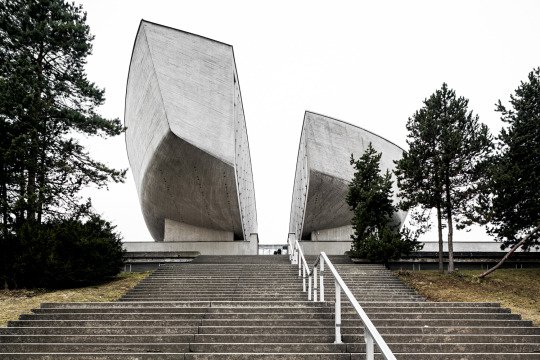
Memorial and Museum of the Slovak National Uprising, by architect Dušan Kuzma, 1963-1970. Banská Bystrica, Slovakia.
How Slovakia’s Soviet Ties Led to a Unique Form of Sci-Fi Architecture
Photographer: Stefano Perego
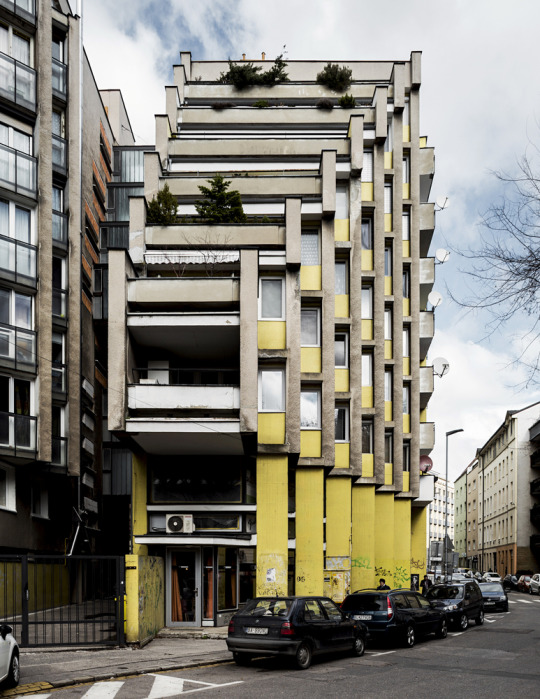
Residential building, by architects Štefan Svetko and Julián Hauskrecht, 1968-1974. Bratislava, Slovakia

University of Agriculture, by architects Vladimír Dedeček and Rudolf Miňovsky, 1960-1966. Nitra, Slovakia.
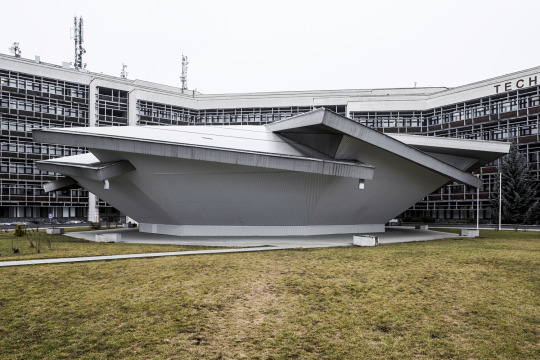
Technical University, by architect Vladimír Dedeček, 1984. Zvolen, Slovakia.
#slovakia#soviet union#architecture#sci-fi architecture#buildings#culture#history#memorial and museum of the slovak national uprising#dusan kuzma#architect#banska bystrica#stefano perego#photographer#stefan svetko#julian hauskrecht#bratislava#ufo#university of agriculture#nitra#vladimir dedecek#rudolf minovsky#technical university
16 notes
·
View notes